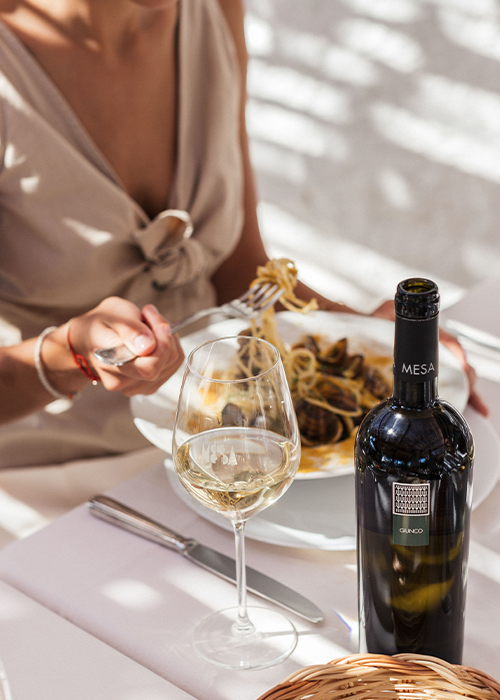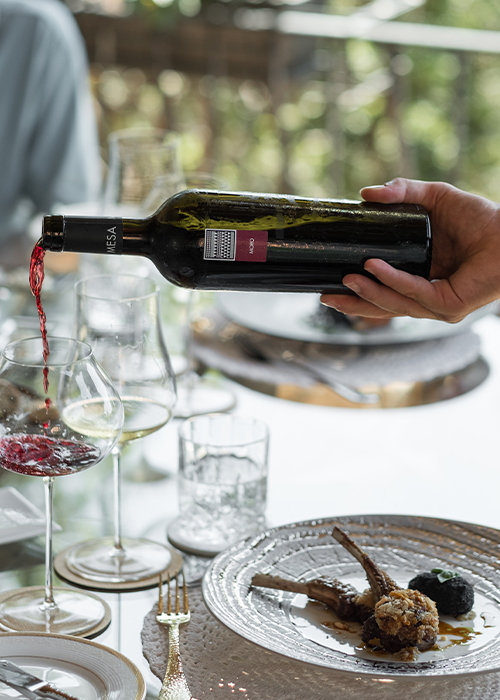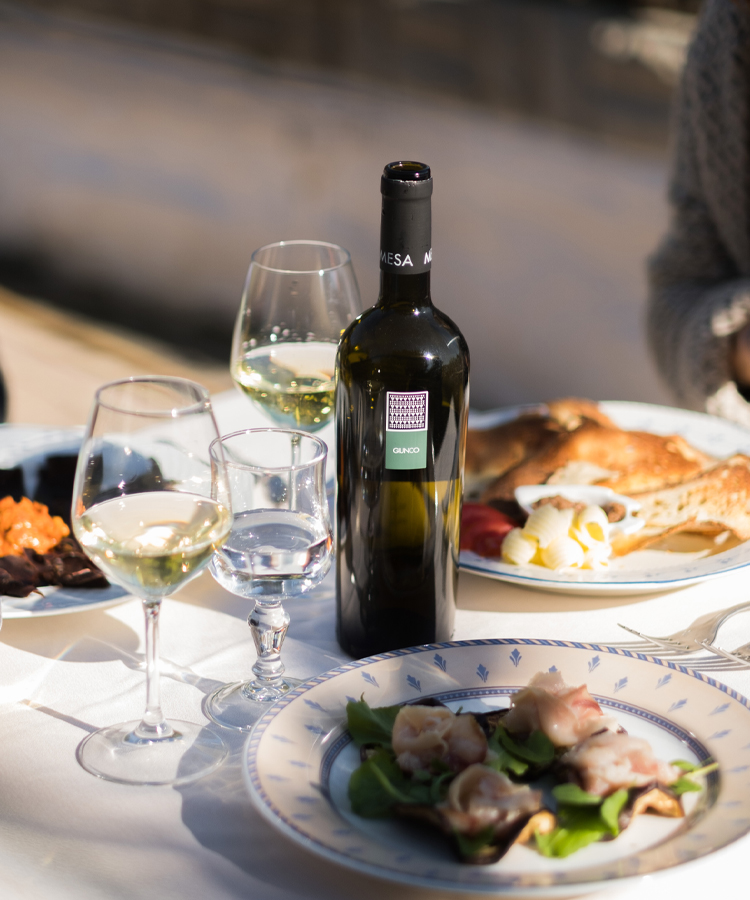
When Gavino Sanna launched Mesa, his Sardinian winery, he had one major inspiration in mind: the dining table.
To Sanna, wine is synonymous with the mesa, which in Sardinian translates to “table.” That equates to nourishment, a meal among friends, a mother’s generosity, and the fragrance of the earth. It is a way for him to express the beauty and culture of his native Sardinia, a Mediterranean island off the coast of Italy, while also celebrating the tradition of breaking bread among loved ones. So naturally, the wines pair with all sorts of food, plenty of which extend beyond the borders of the island.
Sardinia has long produced wine and holds some major designations for its Vermentino and Carignan, two of the most successful grape varieties planted there. The island’s terroir — a warm, dry climate combined with maritime breezes and sandy, clay soils — can be a tricky place for wine-growing. The Mesa vineyard sites have great capacity for water retention to balance out the hot sun. Those sites also happen to fall in the path of the maestrale, a northwest wind that cools the island as it blows in from southern France.
The winery team then farms the 78 hectares of vineyards with sustainable practices to preserve the island’s precious resources. Mesa uses no chemical interventions, opting for manure fertilizers, and reuses winery wastewater to irrigate the greenery surrounding the winery.
The result is something you can taste in the wines, which show the complex terroir in each sip. Vermentino, an indigenous white grape of Italy, thrives in the alluvial and sandstone soils of Sardinia and Mediterranean climate. In Mesa’s Giunco Vermentino di Sardegna DOC, a 100 percent Vermentino, a portion of the grapes sees skin contact for up to 12 hours, adding body and depth to the wine. The straw-yellow wine takes on perfumed aromas of tropical fruits with a zesty acidity on the palate and an iconic mineral finish.
Vermentino calls for seafood — Sardinia is an island, after all — and what goes together in the place, goes together on any table. Sardinians sip chilled Vermentino alongside all sorts of fish: the fresh daily catch from the island’s fishermen, who hunt for sea bass, bluefin tuna, and octopus; traditional dishes like grilled razor clams garnished with parsley; and, of course, pasta, such as spaghetti dressed with olive oil and red pepper flakes then topped with foraged sea urchin. Then, obviously, there’s classic Sardinian: a heaping bowl of spaghetti with olive oil, garlic and lemon zest that’s covered in freshly shaved bottarga, the traditional cured fish roe of the island.

Vermentino di Sardegna is so versatile with food that it pairs with plenty of fish, but also hearty vegetables, vinaigrette-dressed salads, and light meat dishes like veal and pork, plus the simple pleasure of bite with the pane guttiau, an ultra-thin, crispy bread seasoned with local olive oil and salt. It could also be sipped alongside mahi mahi tacos and a carnitas burrito, plus a crispy appetizer of tortilla chips.
It is such a crowd-pleasing white wine that it’s become a mainstay at dinner parties with all sorts of menus. The wine pairs with sweet, flaky halibut that soaks up bold seasonings like pesto and basil. Herb-crusted cauliflower steaks complement the bright mineral flavors of the Vermentino, and meat eaters will salivate over a fennel-marinated pork paired with the subtle herbaceous notes of the wine. Pass around crab cakes topped with relish, falafel and hummus, and cashew milk cheese, too. Talk about a spirited meal full of flavor.
Carignan also flourishes on the island, in the sandy soils near sea level where the hot sun allows the red grapes on the old vines to ripen into an intense, inky-hued wine. The Mesa Buio Carignano del Sucis DOC is made entirely of Carignan, harvested in mid-fall when the grapes show a balance among the fruit, spice, tannin, and sugar. Sanna’s team ferments and ages the wine in stainless-steel vats, allowing the robust wine to retain its fruit-forward flavors and vibrant acidity while calming the firm tannins.

It’s the type of bottle your red wine-obsessed friend will flip over — and sip another glass. Aromas of red plum framed by black pepper lead into a medium-bodied palate of unoaked fruit and spice through the long finish. The wine’s acidity is enough to cut through a fatty cheese or a tuna steak, but not so much to overpower the dish.
In fact, Sardinian Carignan’s bright and fresh flavors allow it to pair with a surprising number of dishes, considering it’s such a bold red. Some have called it the perfect food wine, something akin to a Zinfandel or a Gamay, thanks to its flexibility on the dining table. Carignan draws out umami in savory, meaty dishes like prosciutto or sausage, spice in red sauce pasta dishes and pizza, and fruity flavors in a whole host of disparate ingredients, from Gouda and pumpkin to lamb and duck.
Like Vermentino, Carignan is a staple on the table no matter what’s on the menu. Tagine? It’ll work with the ras el hanout in the spice mix. Beef brisket? A pairing made for barbecue. Pulao or biryani? Caringan stands up to the many herbs and spices of both rice dishes.
And no matter what is set before a dinner guest, you know the wines of Sardinia will be a match. After all, Mesa was named for the romance of the dinner experience.
This article is sponsored by Cantina Mesa.
